Technology
Samsung Galaxy Z Flip 6 review
Published
2 months agoon


Samsung Galaxy Z Flip 6 review
In 2020, when Samsung unveiled the first generation of foldable phones Galaxy Z Fold and Galaxy Z Flip, many users and experts believed that this new form could become a new soft in the smartphone world in the very near future. In fact, at that time, it was expected that all companies would gradually enter the competition for foldable phones. Smaller Chinese companies quickly started making lower-quality and weirder models, and after a while, the giants of the Chinese smartphone industry also entered the race to keep up with their Korean neighbors.
From the beginning, foldable phones faced several basic problems: firstly, due to the novelty of the market, no company could claim to produce the best form factor for foldable phones; It is enough to remember the first generation Galaxy Z Fold with its funny external display, it was not clear how Samsung engineers showed it as a final product to the company’s senior executives.
-
Galaxy Z Flip 6 video review
-
Eye-catching design with millimeter changes
-
Bright display with a very wide aspect ratio
-
Optimal performance and charging; Goodbye 8GB RAM
-
One UI interface with artificial intelligence
-
Dual camera with normal experience
-
Main camera function
-
Ultrawide camera performance
-
Galaxy Z Flip 6 against competitors
The next big problem of foldable phones was the display, which faced the manufacturing companies with two basic challenges: firstly, due to the use of plastic to make the screen flexible, the vulnerability increased significantly; For example, in the early generations of almost all foldables, when touching the screen, it was enough for your finger to be on the screen at a slight angle and your fingernails to hit it, so that a permanent line would become a guest of your expensive phone. The folding in the middle of the screen, which was supposed to become fainter and fainter in a few generations, was the next challenge that had such a negative impact on the opinion of users about foldables that companies like Motorola tried to eliminate it in any way and using creative engineering techniques.
The last and perhaps the biggest problem of foldable phones was their space price; The first generation Galaxy Z Flip cost $1,500 and the Galaxy Fold cost nearly $2,000. This point made Samsung and competing companies choose weaker hardware for their foldable phones to prevent further increases in the final price of the devices. As a result, flip phones were equipped with weaker batteries and cameras than their much cheaper competitors.
The problems with foldable phones are still there, and the price problem has gotten worse
In recent years, all of the challenges that foldable smartphones have faced have made them not very popular with users; The truth is that except for geeks and technology junkies or users with rich and generous friends to give as gifts, the number of ordinary users who decide to pay several tens of millions of Tomans (or several hundred dollars) more and a phone with weaker hardware; But with a different design and format, it seems very, very rare to buy them, and the statistics confirm this opinion.

Currently, according to the latest reports of the TrendForce Institute, foldable phones account for only one percent of the total share of smartphones sold around the world. According to the CounterPoint Institute, nearly half of the users of foldable phones prefer the clamshell form similar to the Galaxy Z flips; In contrast, 35% are in favor of models similar to Folds, and 15% do not see a difference between the two form factors. According to Statista statistics, by the end of 2023, Samsung will have about 70% of the foldable phone market and will be considered the uncontested king of this segment of the smartphone world. However this absolute superiority has become a big challenge for the Korean giant.
|
Galaxy Z Flip 6 technical specifications table |
|
|---|---|
|
hardware |
Description |
|
Dimensions |
Unfolded: 165.1 x 71.9 x 6.9 mm Folded: 85.1 x 71.9 x 14.9 mm |
|
Weight |
187 grams |
|
Internal display |
6.7 inches LTPO Dynamic AMOLED 2X 120 Hz – HDR10+ support |
|
External display |
3.4 inches Super AMOLED |
|
chip |
Snapdragon 8 Generation 3 |
|
RAM and internal memory |
256GB 12GB RAM 512GB 12GB RAM |
|
Main camera |
50 megapixels f/1.8 – optical image stabilization |
|
Other cameras |
12 megapixel ultrawide – f/2.2 10-megapixel selfie |
|
filming |
4K@30/60fps 1080p@60/120/240fps 720p@960fps |
|
battery |
4000 mAh |
|
Charging technology |
25 watts 15 watts wireless 4.5W reverse wireless |
The question facing Samsung is simple; But it seems very deep: in a market without competitors, how to improve? Samsung’s approach in recent years shows that company managers either do not believe in this question or do not take it very seriously. The example for our claim will be the changes, improvements, and pricing model of Samsung foldable phones during the years 2020 to 2024. Millimeter changes and incremental updates might make sense for a fully established phone like the Galaxy S24 Ultra, But it’s definitely not what users of a new form of smartphone like foldable would expect.
Considering all the circumstances and taking into account that the Galaxy Z Flip 5 also had minor changes compared to the Z Flip 4, stay with me as I review the Galaxy Z Flip 6.
Eye-catching design with millimeter changes
In the design department, everything goes smoothly and without challenges. At first glance, it seems that the Galaxy Z Flip 6 has not changed anything compared to the Galaxy Z Flip 5; But with a little closer look, you can see the minor and somewhat impressive changes of the new generation.
In terms of dimensions, almost everything remains the same; The weight of the phone is 187 grams, and in the unfolded state, the length, width, and thickness are measured at 165.1, 71.9, and 6.9 mm, respectively, which are the same numbers obtained in the measurement of the Galaxy Z Flip 5. We can easily conclude that in the closed state, we are facing the same numbers of 85.1 and 71.9 mm for length and width; But the thickness of Galaxy Z Flip 6 in this situation is reduced by 0.02 mm, showing a change in the hinge design of the phone.

The outer screen is designed and made in the same irregular shape as the Galaxy Z Flip 5; With the knowledge that we have of Samsung Display’s ability to make different shapes of screens, Koreans probably don’t have any particular problem with making the outer screen full screen; But so far this has not happened and we have to admit that Motorola’s foldable all-encompassing display; Like the Razer 50 Ultra, it looks much more attractive and exciting. Samsung may claim that the outer screen of Z Flip 6 has a more practical design; But in fact, there is no special difference in terms of functionality between the display of this phone and competitors.
Motorola Razer 50 Ultra doesn’t really have a more exciting external display?!
The back of the Galaxy Z Flip 6 is still made of Gorilla Glass Victus 2; But this time, Samsung has chosen a matte appearance for it, which gives the phone a more attractive and stylish look, and touching the matte body of the device conveys a completely different and pleasant feeling to the user than the purely glass body, on the other hand, fingerprints and smudges are rare. The matte surface of the phone is attractive, which is a strong point for the Galaxy Z Flip 6.
Like the previous generation, aluminum has been used to make the phone frame so that the Galaxy Z Flip 6 is more resistant to falls and possible shocks. One of the differences between Flip 6 and the previous generation phone can be seen in the design of the same frame; Where Samsung designers have eliminated the curvature of the edges of the frame and used a completely flat form. This change brings a more modern look to the phone, But it can be said that it makes it a little more difficult to work with the phone in the style of Galaxy S24 Ultra or Apple iPhones; However, having a more modern design is probably more important in the minds of many users than making it a little harder to work with the phone.




This year, Samsung has equipped the Galaxy Z Flip 6 cameras with a ring of the same color as the body; This gives a different look to the new Korean foldable phone, but whether you like the different look of the Z Flip 6 or not is completely up to you. These rings are so clearly designed that even buyers of the black version will probably notice their existence; In any case, the color contrast created between the rings (in the blue versions we have for review, or yellow and green) and the dark glass behind them, will probably be the only distinguishing point between the Galaxy Z Flip 6 and 5.
Color rings for the camera; The most important difference in appearance with the previous generation
Although Samsung does not provide specific information about the hinge mechanism of the phone; But probably the Galaxy Z Flip 6 probably uses the same Flexhinge hinge as the previous generation with a little optimization. This mechanism was developed to reduce and actually eliminate the distance between the two halves of the screen in the folded state, and it allowed the screen angle to be adjusted between 75 and 115 degrees in the half-open state. At the time of the unveiling of Z Flip 5, it was mentioned that the new hinge mechanism could guarantee 100 times of opening and closing the phone every day for five years, which will probably be the same for the new version.
The minor changes made in the Flexhinge system have enabled Samsung to equip the Galaxy Z Flip 6 with the IP48 standard, which means resistance to water (30 minutes at a depth of 1.5 meters) and dust; This ability was obtained in situations where the previous generation supported the IPX8 standard and in fact had no resistance to dust penetration. It may not be bad to know that Razer 50 Ultra, as one of the most serious competitors of Z Flip 6, also supports the IPX8 standard.

Around the frame of the Galaxy Z Flip 6, you can find the volume and power keys, which, as in previous years, the power key also plays the role of a fingerprint sensor, and the location of the volume keys is a little higher than what we expect. In the lower part, you will see one of the speakers of Z Flip 6, which together with the conversation speaker, form the set of stereo speakers of the phone.
Galaxy Z Flip 6 speakers sometimes have a satisfactory volume in low-noise environments; Both high and low frequencies and mid-range frequencies are well covered; Therefore, fans of different styles of music from rock to jazz will be satisfied, as well as podcast lovers. If you are a fan of watching movies with your phone, you will also enjoy the volume, clarity, and loudness of the speakers; Of course, do not forget that the speaker of the phone is not at the same level as specialized headphones in any form and quality, and if you intend to rate them based on the ability of the speakers to distinguish the sounds of instruments, you should manage your expectations a little.
Bright display with a very wide aspect ratio
After opening the phone, we get to the sensitive 6.7-inch internal display of the Galaxy Z Flip 6. This 2640 x 1080 pixel OLED display supports a refresh rate of 120 Hz and thanks to LTPO technology, it can change the refresh rate between 1 and 120 Hz depending on the type of content being displayed. Samsung says that the maximum brightness of the internal display reaches 2600 nits and the pixel density is equal to a very good number of 426 pixels.

The folding in the middle of the screen is one of the most important and challenging points of the Galaxy Z Flip screen. You might expect that during the four years that have passed since the introduction of the first generation Z Flip, at least 20% of the folding depth has been reduced every year; But in fact it is not like that. ZFlip’s folding has become less prominent, But it still stands strong and powerful. Apart from the discussion of folding, the narrow and elongated dimensions of the flip screen with a ratio of 22:9 still seem strange and unpleasant; you have to constantly move your hand to access the physical keys or the edges of the screen.
The outer display remains unchanged at least in terms of dimensions; The 3.4-inch folder-like OLED display, which according to Samsung now reaches a maximum brightness of 1600 nits, is covered with a protective cover of Gorilla Glass Victus 2 and its pixel density is 306 pixels/inch, which is not a very high number in the standard of 2024 displays. In addition, the refresh rate of the external display still does not exceed 60 Hz, which by itself can give the user a contradictory feeling when switching between the two displays.
|
Galaxy Z Flip 6 display performance against competitors |
|||||||||
|---|---|---|---|---|---|---|---|---|---|
|
Product/Test |
Minimum brightness |
Maximum brightness |
contrast ratio |
sRGB |
DCI P3 |
Adobe RGB |
|||
|
manual Automatically |
local |
cover |
Average error |
cover |
Average error |
cover |
Average error |
||
|
Galaxy Z Flip 6 (main display) |
0.7 |
830 2800 |
∞ |
96.1 |
3.9 |
95.8 |
3.8 |
— |
— |
|
Galaxy Z Flip 6 (display cover) |
1 |
870 1450 |
∞ |
95.6 |
2.6 |
86 |
3.8 |
— |
— |
|
Motorola Razr 40 Ultra (main display) |
3 |
620 1450 |
∞ |
97.8 |
2.1 |
100 |
3.3 |
121.2 |
3.3 |
|
Motorola Razr 40 Ultra (display cover) |
— |
604 1000 |
∞ |
— |
— |
— |
— |
— |
— |
|
Galaxy Z Flip 5 (main display) |
1 |
587 1860 |
∞ |
97.3 |
1.6 |
99.7 |
2.9 |
92.9 |
3.7 |
|
Galaxy Z Flip 5 (display cover) |
1 |
747 1200 |
∞ |
97.5 |
2.4 |
98.7 |
4 |
88.8 |
4.1 |
|
Galaxy S24 Ultra |
0.7 |
914 2635 |
∞ |
102 |
3.5 |
81.8 |
4.4 |
— |
— |
|
iPhone 15 Pro Max |
2.15 |
1041 1950 |
∞ |
99.7 |
0.9 |
— |
— |
— |
— |
According to the tests carried out in the Zoomit laboratory on the Galaxy Z Flip 6, we obtained the maximum brightness of the internal display in manual mode and by activating the Extra Brightness option equal to 830 nits, and in the automatic setting, the maximum brightness of 2050 nits was reached. Also, the measurement of the highest level of brightness when playing HDR content shows the same number of 2800 nits, which is a very impressive number and beyond the brightness of 2600 nits announced by Samsung.
We achieved a maximum brightness of 1,450 nits for the external display of the Galaxy Z Flip 6 when playing HDR content, which is within the range of 1,600 nits announced by Samsung for the maximum brightness of the external panel of this phone.
Fortunately, Samsung realized the weakness of its screens in covering the color space and somehow improved it in Galaxy Z Flip 6; Therefore, in the display settings section and the color profiles section, a slider named Vividness has been added to the Vivid color profile, which, by increasing it, the device covers the wide DCI-P3 color space in a better way. Apparently, the Koreans have added this software feature to the Galaxy S24 series.
Optimal performance and charging; Goodbye 8GB RAM
Galaxy Z Flip 6 is powered by the 3rd generation Snapdragon 8 flagship chip, which is considered the most powerful chip in the Android world today, and in some areas, even surpasses Apple’s powerful A17 Pro chip. Samsung’s new foldable is available to users in two capacities of 256 and 512 GB, But both versions use 12 GB of RAM; Goodbye 8GB RAM!
|
Galaxy Z Flip 6 processing performance against competitors |
|||||
|---|---|---|---|---|---|
|
Product/benchmark |
chip |
Speedometer 2.1 |
Geekbench 6 |
GFXbench |
|
|
Browsing experience |
GPU computing power |
CPU computing power |
Game simulator |
||
|
Vulkan/Metal |
Single/Multi |
Aztec Ruins Onscreen/1440p |
|||
|
Vulkan/Metal |
|||||
|
Galaxy Z Flip 6 |
Snapdragon 8 Gen 3 |
244 |
11241 |
2085 6528 |
101 68 |
|
Motorola Razr 40 Ultra |
Snapdragon 8+ Gen1 |
69.2 |
7661 |
1795 4480 |
60 36 |
|
Galaxy Z Flip 5 |
Snapdragon 8 Gen 2 for Galaxy |
175 |
9237 |
2039 5181 |
90 63 |
|
iPhone 15 Pro Max |
A17 Pro |
475 |
27503 |
2960 7339 |
59 46.8 |
|
Galaxy S24 Ultra |
Snapdragon 8 Gen 3 for Galaxy |
240 |
17012 |
2262 7005 |
75 81 |
|
Pixel 8 Pro |
Tensor G3 |
131 |
5854 |
1766 4554 |
37 37 |
According to the benchmarks, the Galaxy Z Flip 6 seems to display a performance close to the S24 Ultra, which is not far from expected considering that it has the same chip. The existing difference can also be attributed to the better performance of S24 Ultra in cooling the device.
Naturally, the target group of Galaxy Z Flip 6 is not gamers; But for the first time in this series of foldable phones, Samsung has also used the Vapor Chamber cooling system so that the heat produced by the chip can be quickly removed from the phone.
In the 20-minute Zomit stress test, the Z Flip 6 showed more or less the same behavior as the previous generation with a 58% drop in performance; But thanks to the use of a more powerful chip, at the end of the test, it showed about 30% better performance and outperformed the Z Flip 5.
As expected, Galaxy Z Flip 6 also performs well in playing games; So a heavy game like Genshin Impact runs with the highest graphics settings in the range of 60 frames per second; But it seems that the Warzone game is still not optimal; Because achieving a rate of 60 frames per second, you have to leave the graphics settings to the automatic mode of the game, otherwise, the frame rate of the game will be below 30 frames per second.
|
Galaxy Z Flip 6 performance in games |
||
|---|---|---|
|
Games/Parameters |
Graphics settings |
Average frame rate |
|
Call of Duty: Warzone |
High |
28 frames per second |
|
Real Racing 3 |
— |
112 frames per second |
|
Genshin Impact |
Very high |
58 frames per second |
Using a more powerful and optimized chip alone seems to be enough to improve the charging of the phone; But this year, Samsung has increased the capacity of its foldable battery by 8% compared to the previous year to 4000 mAh. The Z Flip 6 battery supports 25W charging, which cannot be called “fast charging” these days. 15W wireless charging and 4.5W reverse charging are also available for users.
|
Motorola Galaxy Z Flip 6 battery life vs competitors |
||||
|---|---|---|---|---|
|
Product/benchmark |
Display |
battery |
Play video |
Everyday use |
|
Dimensions, resolution and refresh rate |
milliampere hour |
minute: hour |
minute: hour |
|
|
Galaxy Z Flip 6 |
6.7 inches, 120 Hz 1080×2640 pixels |
4000 |
25:00 |
11:32 |
|
Motorola Razr 40 Ultra |
6.9 inches, 165 Hz 1080×2640 pixels |
3800 |
17:00 |
10:38 |
|
Galaxy Z Flip 5 |
6.7 inches, 120 Hz 2640 x 1080 pixels |
3700 |
22:13 |
10:28 |
As expected, the 4000 mAh battery, along with the more optimized chip, has significantly improved battery performance. In the standard Zoomit video playback test, Galaxy Z Flip 6 managed to register a record of 25 hours, which is almost 3 hours more than the previous generation; On the other hand, the phone had 11 hours and 32 minutes of charging in the daily user test, which shows an improvement of about an hour compared to the previous generation.
One UI interface with artificial intelligence
As expected, much of Samsung’s focus for the introduction of the Galaxy Z Flip 6 and of course the Galaxy Z Fold 6 was on showcasing the Galaxy AI capabilities. In addition to all the previous functions of the external display, such as the possibility of using different applications, controlling and displaying notifications, quick access to messages and settings, displaying the amount of sports activities, or setting different backgrounds at different times of the day, some of the smart functions that we saw in the introduction of the S24 family are also are available on this screen.




One of the new features in the Galaxy AI collection is an item called Photo Assist, which allows editing photos with artificial intelligence. Among the Photo Assist features, one of the most impressive is the Portrait Studio, which allows the user to edit their photos in Comic, 3D Cartoon, Watercolor, and Sketch styles.





Another interesting feature that also has an interesting function is Sketch to Image, which allows the user to add realistic elements to their photos by drawing simple diagrams and the magic of artificial intelligence.
 Initial photo
Initial photo

The first plan

The second plan
With Galaxy Z Flip 6, it is possible to access the Chat Assist function from the external display; With the help of this feature, the phone can recognize the responses you use the most and when receiving a new message, based on the text of the message, it can suggest a pre-prepared response. Other Galaxy AI features such as Circle to Search for searching on Google by drawing a circle around the subject in the image, Live Translate for simultaneous translation of messages from any language to any other supported language and Transcript Assist for creating text from an audio file are also available to Galaxy users. Z Flip 6 is located; However, contrary to Samsung’s promise, there is still no news of Persian language support. There is also a special menu in the phone settings so that users can familiarize themselves with all the features based on the artificial intelligence of Samsung phones.

If we leave aside the relatively numerous functions of Galaxy AI, Galaxy Z Flip 6 uses the same familiar One UI 6.1.1 user interface based on Android 14; Of course, Samsung says that just like the flagships of the Galaxy S family, it will provide up to 7 years of software support for its new foldable; Therefore, if there is no special problem, the Galaxy Z Flip 6 will also see Android 21.
The camera has always been one of the weak points of Samsung’s expensive folding phone. Stranger than that, the Galaxy Z Fold 5 camera remained unchanged compared to its previous generation, the Z Fold 4. As a result, it is not so strange to see that Samsung has finally reached the server of the main camera of Z Flip 6.
Dual camera with normal experience
Galaxy Z Flip 6, like its competitors and its previous generation, uses a dual arrangement of “wide + ultrawide” for rear cameras; Of course, the main camera (wide) now uses a much larger 50-megapixel sensor instead of the previous 12-megapixel module. In the following, we will talk more about cameras.

The main camera of the Galaxy Z Flip 6 uses a 50-megapixel, 1/1.57-inch Samsung S5KGN3 sensor with 1.0-micrometer pixels and a TetraCell color filter; The same sensor that also plays the role of the main camera of the Galaxy S24. This sensor is 28% larger than the one used in the previous generation, as before, it is located behind the f/1.8 lens with optical image stabilization and uses Dual Pixel phase detection autofocus.
Are you happy with the Galaxy S24 camera on the Galaxy Z Flip 6?
The ultrawide camera of the Galaxy Z Flip 6 does not experience any changes compared to the past and still uses the 12-megapixel Samsung S5K3LU sensor with 1.12-micrometer pixels behind the ultra-wide f/2.2 lens with a 123-degree field of view. Note that there is no autofocus for macro photography.
Main camera function
Considering that the Provisional Engine has now been added to the Galaxy Z Flip 6, Samsung claims that the photos taken with this phone, especially in low-light environments, are at the same level as the photos of the Galaxy S24 and its Night Mode.

Galaxy Z Flip 6 main camera

Galaxy Z Flip 5 main camera

Cut the photo and flip 6

Flip photo cut 5
In fact, Samsung’s claim can be accepted; Even if the Z Flip6’s photos aren’t on par with the S24+’s, they’re a slight improvement over the Galaxy Z Flip 5 in some situations, especially night photography. In the photos above, the Galaxy Z Flip 6 both creates a brighter image and pulls out more details from the building facade.
In photos taken with Night Mode, details are preserved much better by the Galaxy Z Flip 6; Of course, in order to have more details, you have to accept a little noise, which is not an unnatural occurrence, at least in dark environments.
In daylight, the Galaxy Z Flip 6 usually captures the same photos as the Z Flip 5: colorful and glossy photos that have a lot of detail, high contrast, and a wide dynamic range; But sometimes there are small differences between the photos of the two phones.




In the photos above, the Galaxy Z Flip 6 captures a brighter photo, and looking at the zoomed-in photos, the Z Flip 6 seems to have a little more detail than its predecessor.
In the photos below, at first glance, you can see that Z Flip 6 took darker photos, which of course creates a more dramatic image.




In the cut of the photos, it can be seen that the darker shadows of the Z Flip 6 do not have as much detail in them as the previous generation. In any case, you can see some photos of the Z Flip 6’s main camera in the day and night in the gallery below.
Main camera photo gallery in day and night








Ultrawide camera performance
The photos of the Galaxy Z Flip 6 ultrawide camera in dark environments are very similar to the photos of the Z Flip 5. The dynamic range and colors are very close between the two phones; But with a little attention, he observes that apparently the newer phone does better processing on the images and as a result, the photos have less noise and more details.




As you can see, in terms of color accuracy and dynamic range, there is no particular difference between the new and old generation of Galaxy Z Flip; But with enough zoom, you can see that Z Flip 6 has preserved more details.
Going through dark environments and taking ultrawide photography in sufficient light, the advantages of the Galaxy Z Flip 6 fade away. Here, you won’t see any difference in recorded details compared to the previous generation. Colors appear almost the same, and the problem of less dynamic range coverage in photos from the Z Flip 6’s main camera persists even in ultrawide photos.




According to the dark points of the photo that are in the shadow, it is easy to see that the Galaxy Z Flip 6 was not able to depict the information of these parts in the final photo, and for that reason, the advantage in creating a better contrast between the dark and light points should be given to the Z Flip 5. gave
Ultrawide camera photo gallery



Although a dedicated selfie camera is intended for you; But due to the much higher accuracy of the main camera and the possibility of using the external display as a viewfinder, using it to take selfies is not logical at all. Naturally, the main camera can record high-quality selfies for you.


As expected, features such as FlexCam for better framing and FlexWindow for using an external display as a viewfinder are among the features inherited from previous generations of the Z Flip 6. Features based on artificial intelligence in photography are also present in Samsung’s new foldable; For example, you can use the Generative Edit feature and use it to move the subjects in the image or change their dimensions; Images edited using AI capabilities are also saved with a tag titled AI Generated Content. There are features such as Live Effect to artificially create depth of field and Instant-Slowmo, although the last one will be limited to use on Samsung phones.

All in all, to sum up the cameras, it should be said that the Galaxy Z Flip 6 has only managed to slightly improve night photography compared to the previous generation, and currently, in other conditions, the photography is either not significantly different from the Galaxy Z Flip 5 or, surprisingly, worse than the Galaxy Z Flip 5. It works.
Galaxy Z Flip 6 against competitors
Formula One fans know very well that under normal conditions when the leading driver has enough distance from others, he does not try to set better records and prefers to save his energy and his car for other races and challenges. Samsung seems to be in a similar situation. In the foldable market, the distance between Samsung and its competitors is so great that if something special does not happen, Samsung will not face a special challenge from other companies even in the next decade. This point makes Koreans reluctant to be more creative and improve their foldables more significantly.
Neither the 50-megapixel main camera nor the 4000 mAh battery is a significant upgrade for Samsung, But the competition is so easy for Samsung that it decided to increase the price of the basic version of its foldable phones by 100 dollars compared to last year’s models by using a new chip!
Samsung does not feel much pressure from competitors, and in the absence of a strong competitor, trying to improve is pointless; This will be the worst news for lovers of foldable phones.


You may like
-




What is Kali Linux? Everything you need to know about this popular but mysterious distribution
-

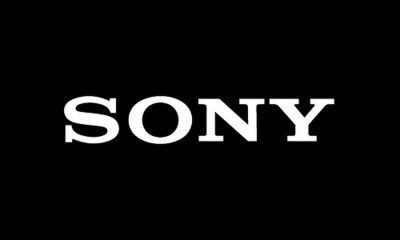


Sony Brand Story; From the production of rice cookers to becoming one of the most famous companies in the world
-




How did the people of the past imagine the future?
-




The story of the Yahoo brand, the story of the fall of a unicorn startup
-

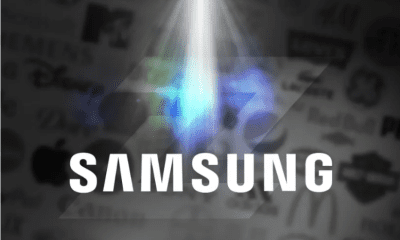


Samsung brand story; Full-view mirror of Korea’s commercial history
-




How to recognize the name of the font from its picture?
Technology
What is Kali Linux? Everything you need to know about this popular but mysterious distribution
Published
1 day agoon
15/09/2024

What is Kali Linux? Everything you need to know about this popular but mysterious distribution
In today’s technology era, as devices and tools become more advanced, their negative and destructive side also become more complex, and as a result, interaction with them requires more care. Currently, with the pervasiveness of the Internet the strong dependence of our daily lives on it, and the emergence of artificial intelligence, cyber threats have also increasingly spread, and the news of hacking various platforms is heard from left and right.
Considering the cyberization of part of people’s lives (entertainment, chat, and earning), the importance of strong cyber security measures cannot be ignored. Kali Linux or in English Kali Linux is a powerful and open-source Linux distribution that is specifically used for penetration testing and digital research and is considered one of the most important tools in the field of cyber security.
 Kali Linux 2024.3
Kali Linux 2024.3
Every techie has probably thought of installing Kali Linux, even via a virtual machine, to poke around and entertain their inner little scientist.
When users first encounter Kali tools, they see strange names such as BeFF Bettercap Hashcat Metasploit, or Nmap, which are almost difficult to guess their use from the name. Overall, Kali is a powerful distribution, and working with it requires a deep understanding of its tools.
What is Kali Linux?
Kali Linux, formerly known as BackTrack Linux, is a Debian-based Linux distribution developed by Offsec. This Linux distribution hosts hundreds of different tools used for penetration testing, reverse engineering, and vulnerability detection of networks and websites.

Due to the fact that Kali is developed based on Debian, it has high stability and security, and its Debian base allows it to benefit from vast software repositories and a similar package management system. In addition, if you are in the category of users who are already familiar with Debian Linux distributions such as Ubuntu, navigating Kali will not be difficult for you; But for users of other operating systems to enter the world of Linux, learning Kali takes more time.
Another important goal of Kali developers is to give the user unlimited freedom to have an open-source and ever-evolving platform and not just be limited to the tools available on the platform. Thus, even the most detailed parts of the software on Kali are open to optimization by the user.
Who uses Kali?
If you are imagining a sequence of Mr. You’re Robot, which depicts a hall full of professional hackers, and the hackers are sitting behind their systems in hoodies, you’re completely wrong. The use of Kali Linux does not require special clothing and there are professional and skilled experts who appear in their company and workplace every day and are responsible for simulating attacks on the network and discovering and fixing its vulnerabilities.
Other people for whom the use of Kali Linux is useful are instructors who plan to train the next generation of white hat hackers and ethical hackers, and Kali Linux is considered the best toolbox for training.
Key features of Kali Linux
Kali Linux has a variety of tools in various categories, including intelligence gathering tools, vulnerability analysis tools, wireless attacks, password mining, and social engineering tools. Do not forget that one of the main foundations of hacking and penetration is social engineering.
 Kali Linux tools menu
Kali Linux tools menu
In Kali Linux, you can use Nmap to scan a network and identify its open ports, Metasploit tool is also provided to exploit a vulnerability, and Wireshark should be used to go deep into the traffic of a network.
Tools like Wifite and Airgeddon are also pre-installed on the Kali platform to check the security of your Wi-Fi network. In fact, Wifite automates the process of cracking WiFi passwords, while Airgeddon provides a convenient environment for assessing wireless network security.
Regardless of the tools and programs that are available by default on the platform immediately after installation, users can install other programs they need by connecting to the Internet by learning how to install the program on Linux.
 Metasploit tool on Kali Linux
Metasploit tool on Kali Linux
The Kali developers have paid attention to every detail and even included a custom kernel kernel for packet injection, which plays a key role when working with Wi-Fi. In addition, all packages are signed with GNU Privacy Guard to assure the user about the security of the platform.
Features of Kali based on the introduction on the official website:
- It is free and will always be free.
- Git is open source.
- It conforms to the Filesystem Hierarchy Standard.
- It is compatible with a wide range of devices.
- It is developed in a safe environment.
- Supports multiple languages; Of course, the platform tools are in English.
- Compatible with ARMEL and ARMHF.
Why is Kali Linux not suitable for everyone?
Kali tools are very powerful and require the same amount of knowledge and experience to use them properly. For example, a normal user might want to scan his home Wi-Fi network and find possible vulnerabilities by installing Kali. But in this process, with Kali’s tools, he creates a problem that has serious consequences for him.
 Installing the program in Kali Linux through the terminal
Installing the program in Kali Linux through the terminal
Suppose you try to execute a script without sufficient knowledge and because Kali is connected to the Internet, this script affects the computer of a certain person or organization. Do not forget that Kali is not designed and optimized for the everyday use of ordinary people and common tasks such as web browsing, editing documents and watching movies.
Go to Ubuntu to satisfy your curiosity and experience the Linux environment
If you are just curious about working with Linux and getting to know the environment of Linux distributions, better options can be found compared to Kali. Usually, the most recommended migration from other platforms to Linux ends up with the Ubuntu distribution, which has a user-friendly interface and a huge support community and runs everyday processes like any other operating system.
Linux Mint is another option recommended for beginners, especially for users who are used to traditional desktops. On the other hand, Windows users usually associate more with Zorin OS. These distributions are all developed for everyday use and perform tasks such as web browsing, editing documents and even running games very well.
Getting started with Kali
Finally, if you decide to install Kali Linux, you should download it from the official Kali website. On the Kali website, you can see different versions of Kali for installation in different ways, and according to your conditions and desired installation method, you can download the desired version.
To install Linux distributions, it should be noted that it is possible to install Linux on Flash or that the user can install the desired distribution on the virtual machine. Installing Kali on a virtual machine has the advantage that all events are kept in isolation and no damage is done to the user’s main operating system.
The Kali Linux distribution is considered the most popular platform for hackers and is designed for specific purposes where everyday use is not among its goals; Therefore, it is not necessary to install it for specialized work and of course to meet the needs of curiosity, but for normal use it is recommended to go for other distributions of Linux.
Dear Zomit users, what is your opinion about the user experience with Kali Linux? Do you recommend installing it?
fashion
Sony Brand Story; From the production of rice cookers to becoming one of the most famous companies in the world
Published
1 day agoon
15/09/2024

Noun: Someone who assists () a goal.
Sony brand story; From the production of rice cookers to becoming one of the most famous companies in the world
Sony is a Japanese multinational company headquartered in Minato, Tokyo. This company provides electrical services, gaming, entertainment, and financial services.
Sony is known as one of the pioneers in the production of electrical products and in recent years it has improved its position among the top companies in the world. Sony consists of many subsidiaries, the most famous of which are Sony Pictures, Sony Music, Sony Mobile, Sony Entertainment, and Financial Holding.
The story of the formation of the Sony brand
Masaru Ibuka returned to Tokyo from World War II in September 1945 to start a new job in the Japanese capital. He set up his workshop in an old, war-torn building with only eight employees. Their initial office walls were full of cracks and had no windows, but over time as their business progressed, the office building also improved.
In October of that year, Ibuka and his group launched a new company called Tokyo Tsushin Kogi, or Tokyo Institute of Communications Research. At that time, everyone was eager to work in the new company and wanted to use their engineering knowledge to rebuild Japan. However, no one knew where to start. Most of the employees were paid from Ibuka’s small savings and they had to work hard to survive.
The story of the formation of Sony goes back to 1945; When Masaru Ibuka returned from World War II
At that time and during the Second World War, people were thirsty to hear the news of the day. As a result, they came up with an interesting idea that changed the fate of the company forever. Most of the radios at that time were either destroyed by the war or could not receive radio waves due to police interference.
The Ibuka company repaired broken radios and also made it possible to receive waves using a series of converters. It didn’t take long for this model of radio to gain many fans among people.
Their business was in the center of attention and for this reason one of the Japanese newspapers published an article about them. This article not only got them more customers but also brought Ibuka’s old friend, Akio Morita, closer to him.
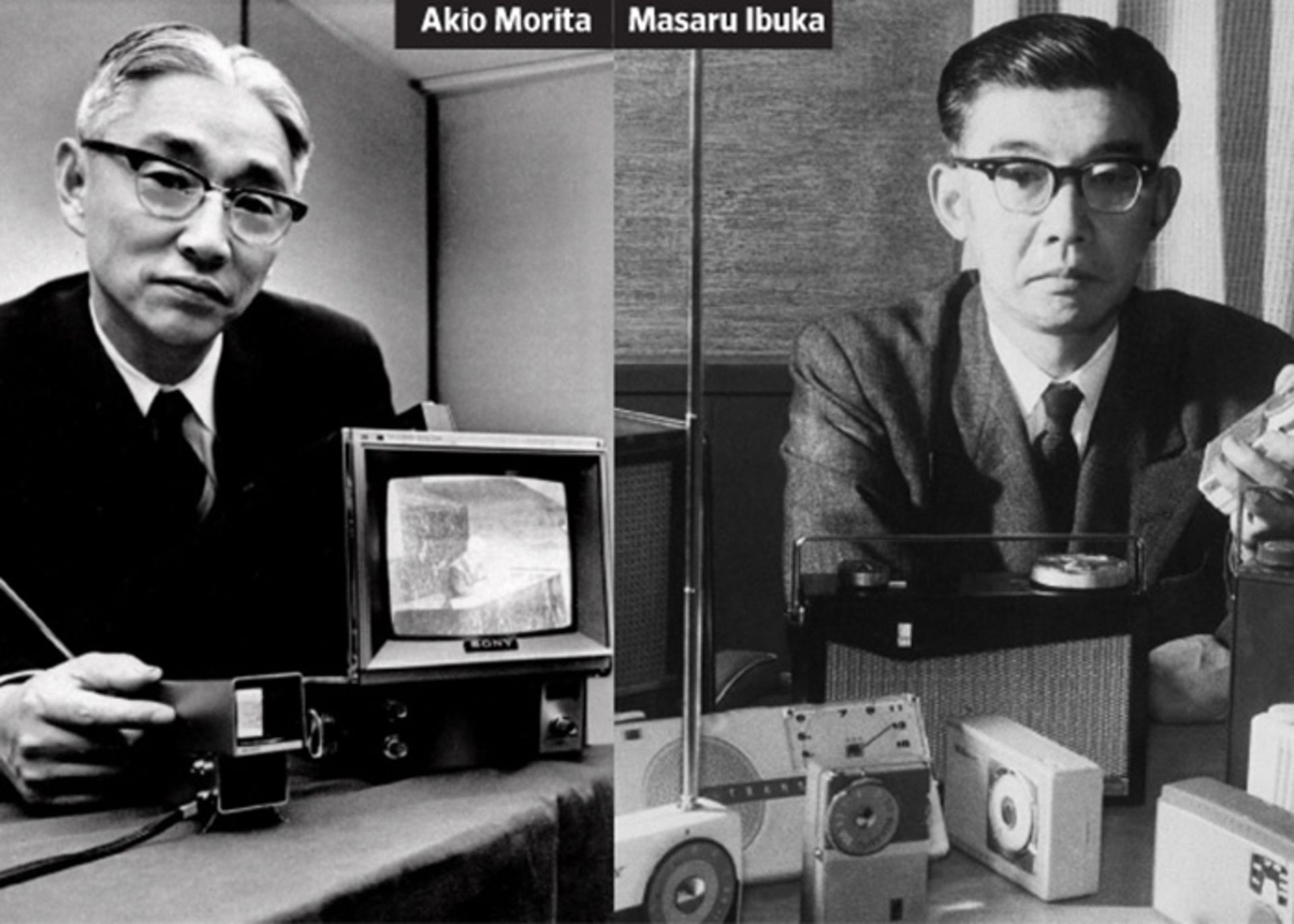
Ibuka and Morita, the founders of Sony Corporation, first met on a research committee studying new types of war weapons.
After some time passed, despite the big age difference, a deep friendship between Ibuka and Morita was formed. After the end of the war, Morita returned to his hometown and the communication between them was cut off. Until one day he read his friend’s name in a newspaper article and called Ibuka. Ibuka also asked him to get to Tokyo as soon as possible to start working with him again.
Sony’s brand name was originally supposed to be TTK or Totsuko
They were looking for a new name to advertise their company globally. Their intention was to choose the abbreviation of the company’s name, TTK, for advertising, but this name was already used. The word Totsuko was also another suggested name. But during his trip to America, Morita realized that it is difficult for Americans to pronounce this name.
They finally chose the name Sony from the combination of 2 words Sonus meaning sound and Sonny meaning young boy. Their purpose in choosing this name was to pronounce it in the same way in all languages of the world.
The company’s first product was a rice cooker, which, contrary to expectations, failed to meet expectations and failed. They did not get discouraged after their first failure and devoted more money to research. They focused on developing products that would benefit the Japanese people.
Sony; The first brand
During 77 years of operation, Sony has been able to launch the first product in many markets of the world. From Japan’s first tape recorder to Japan’s first transistor radio and other products.
Tape recorder

In 1950, the first Japanese tape recorder was made from its American model. This device was also not well received until Sony released a translated version of 999 Ways to Use the tape recorder.
After people became familiar with the product’s uses, the purchase request increased and the Sony tape recorder sold well. The demand for this product increased so much that the company had to expand its facilities to produce orders.
Transistor radio
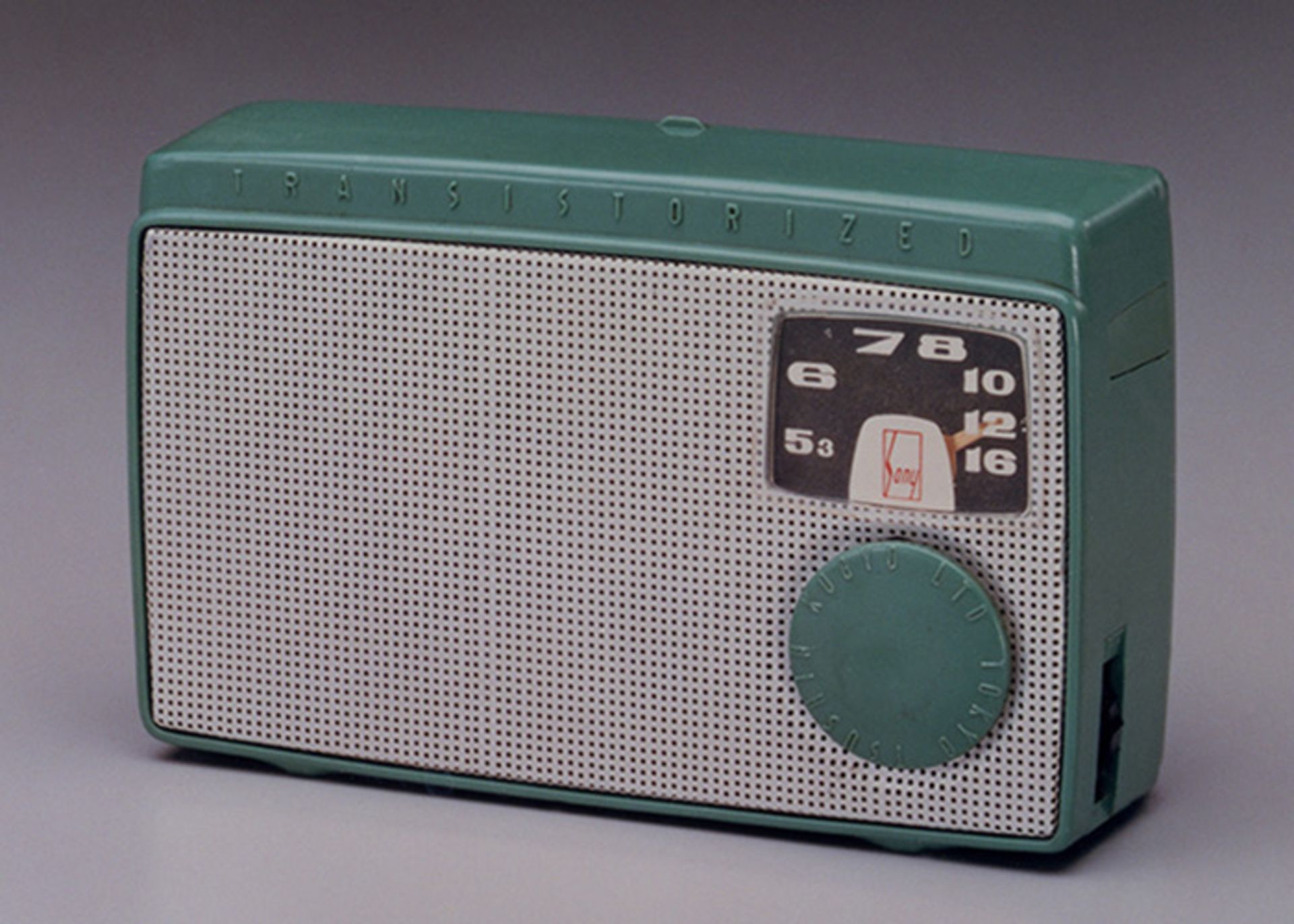
Japan’s first transistor radio was introduced in 1955 by Sony.
Portable TV
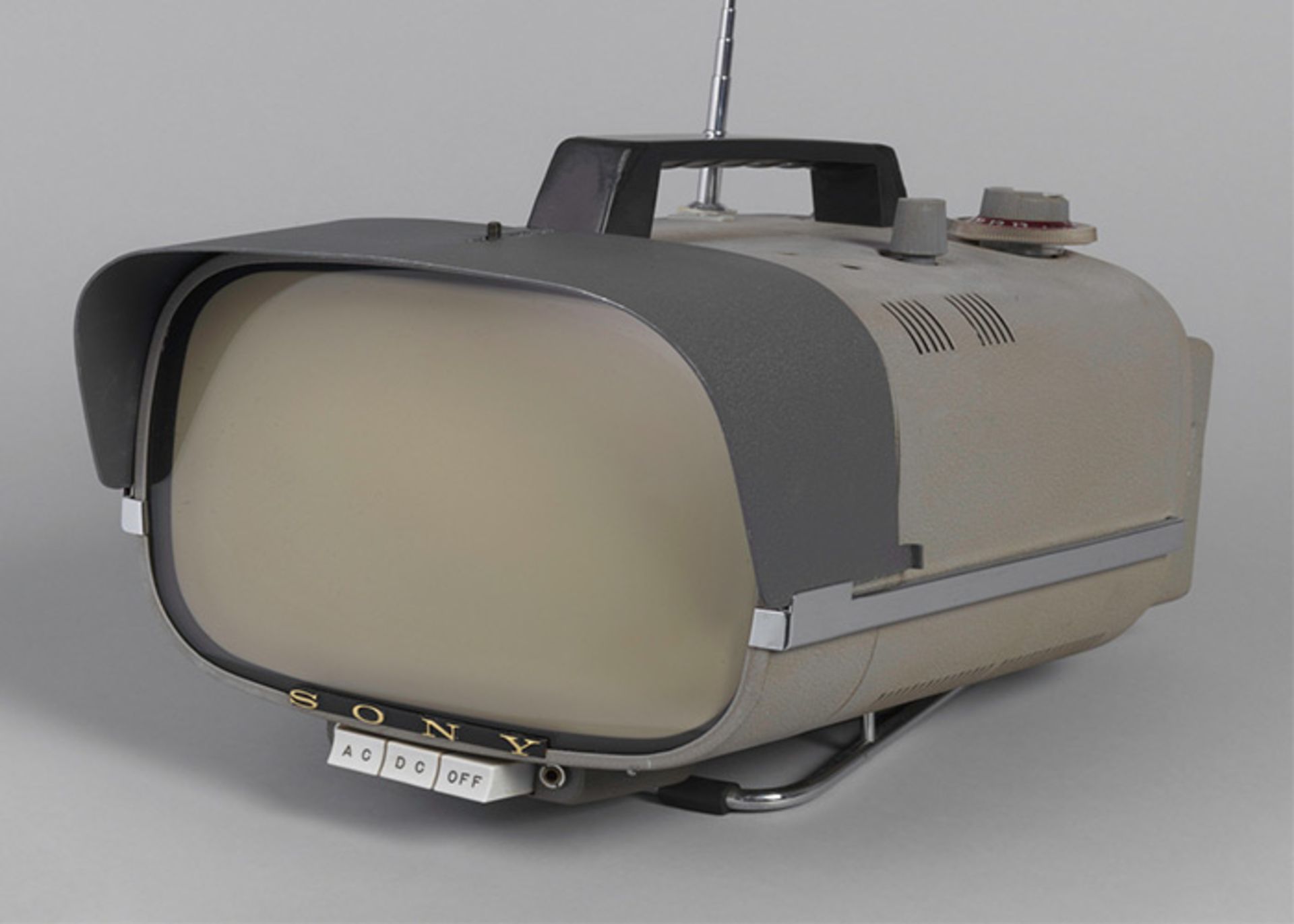
In 1960, Sony released the world’s first portable transistor TV. Sony used radio technology to produce this device.
The televisions of that time were big and in every house, a specific room was reserved for them. But these products brought a new definition of personal televisions to the market.
Video tape player
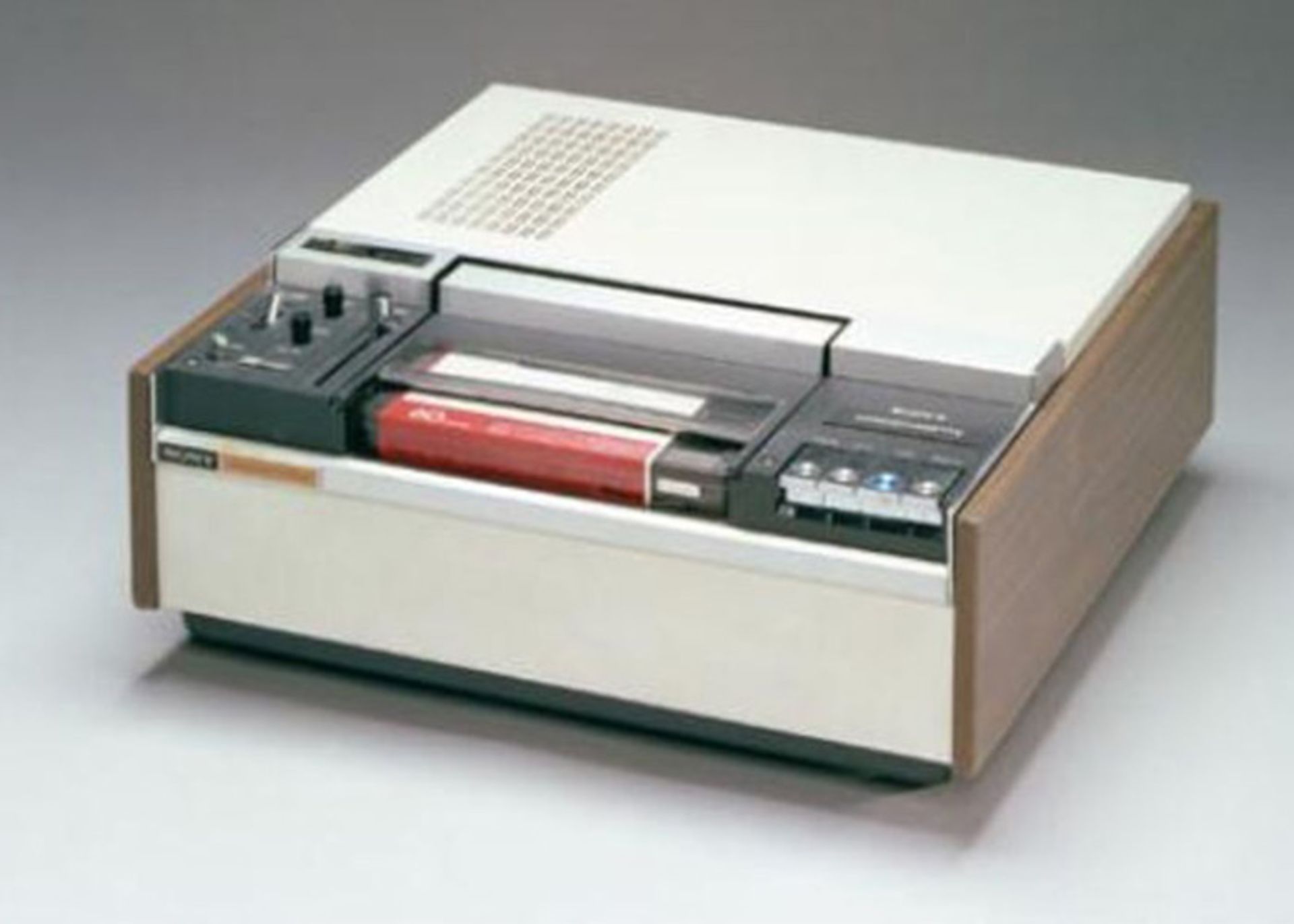
In 1971, Sony unveiled another product. This player was able to show videotapes in color inside the TV.
Masaru Ibuka retired in 1976 and was succeeded by Akio Morita as CEO.
The first generation Walkman

In 1979, Sony launched the first generation of Walkmans. These devices were portable and customers could listen to their favorite cassettes anywhere.
Many employees of the company believed that this device could not become popular among people without the ability to record sound. But contrary to their belief, this device introduced a new and successful lifestyle among people and achieved remarkable success.
The first CD player
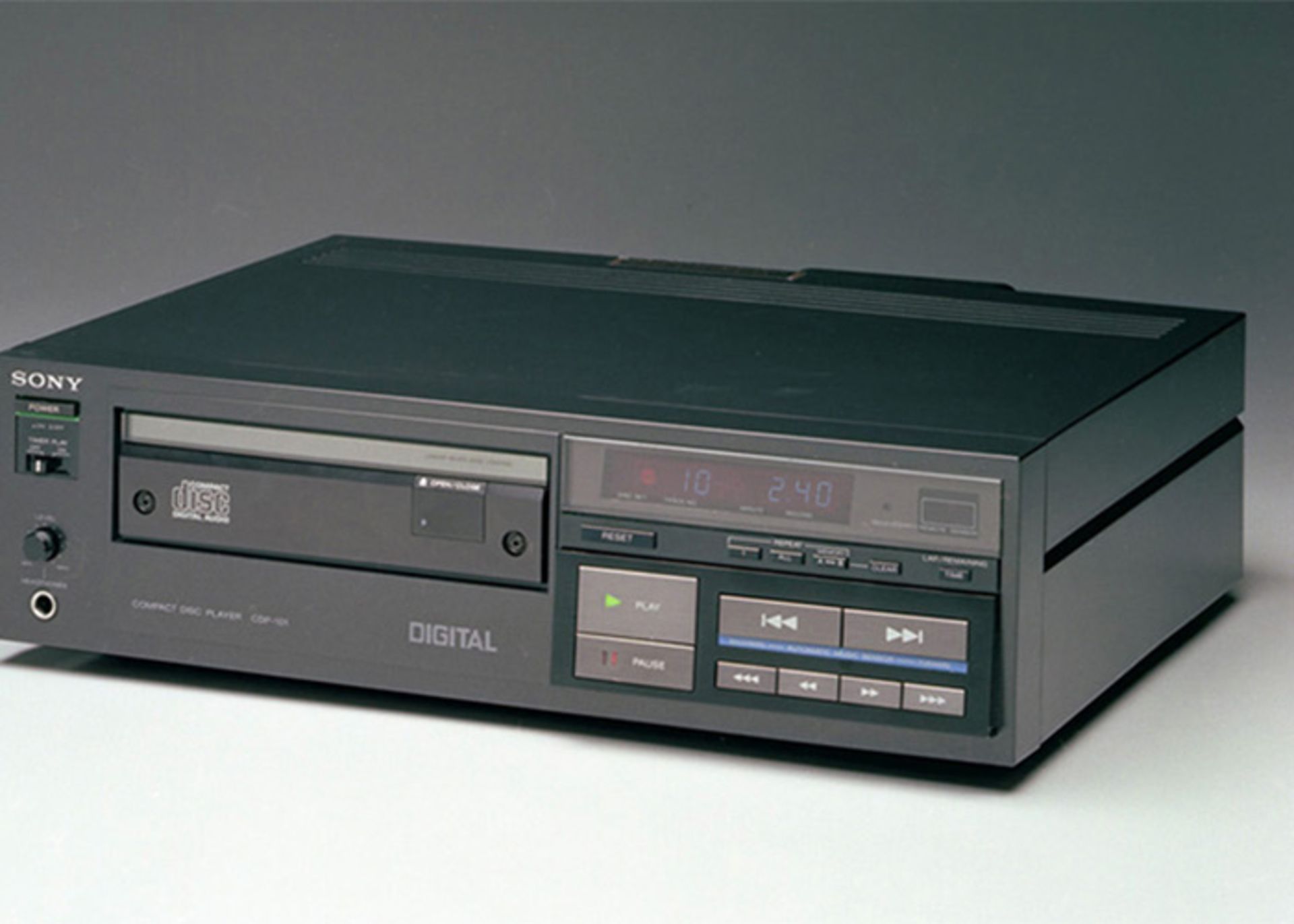
The world’s first CD player was launched in 1982 by Sony.
One of Sony’s senior managers, Norio Oga, was elected as the company’s CEO in 1989. Sony bought Columbia Pictures in the same year. This action was considered the biggest purchase of a Japanese company at that time.
PlayStation
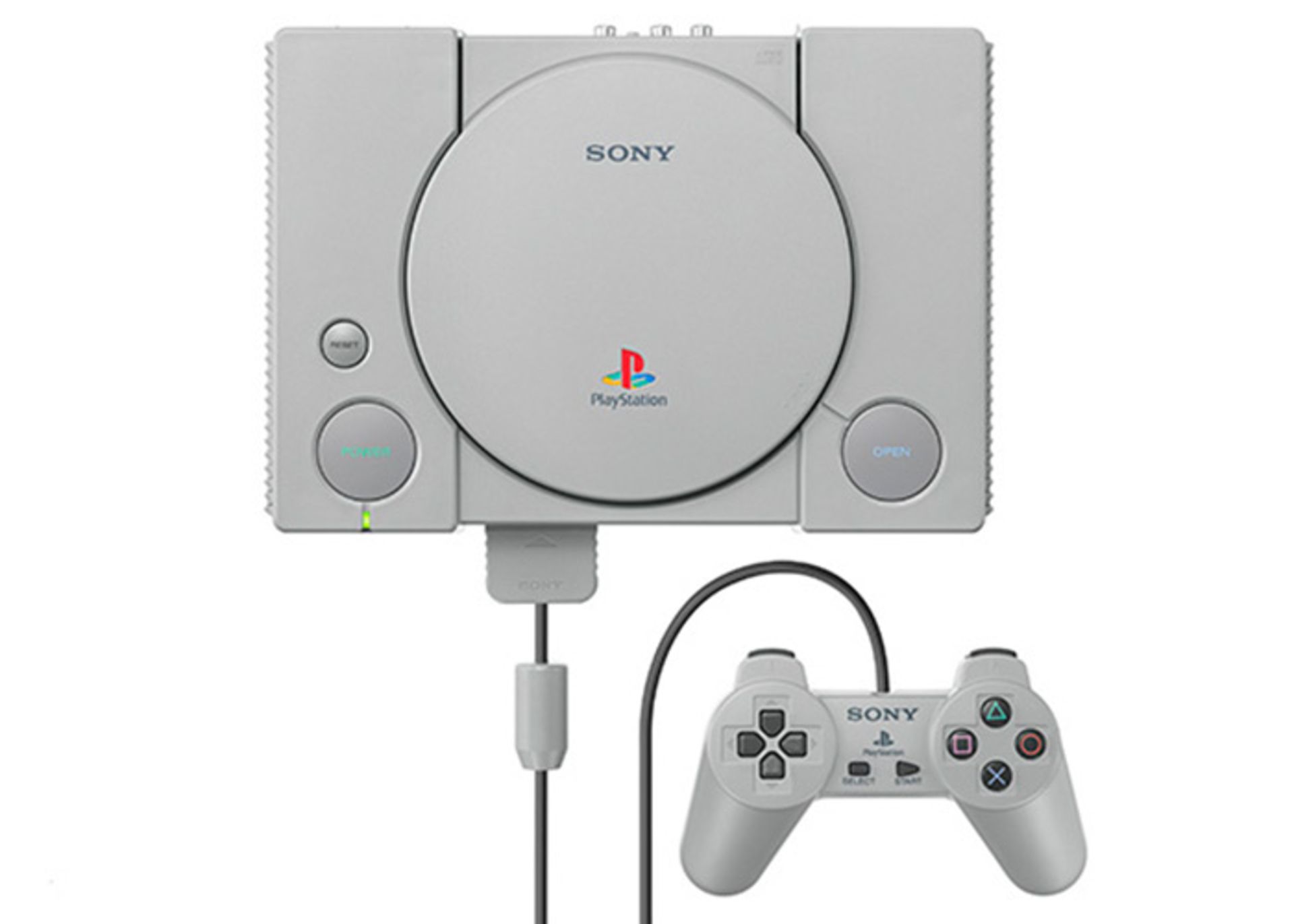
PlayStation is another important product of Sony. This product was sold in the Japanese market in 1994 and entered America and Europe in 1995.
PlayStation became so popular among people that its sales reached 10 million units by the end of 1996, and in 1998, about 50 million of this console had been sold. The production of new models of this product continues and today PlayStation 5 is considered the newest Sony console.
Digital camera
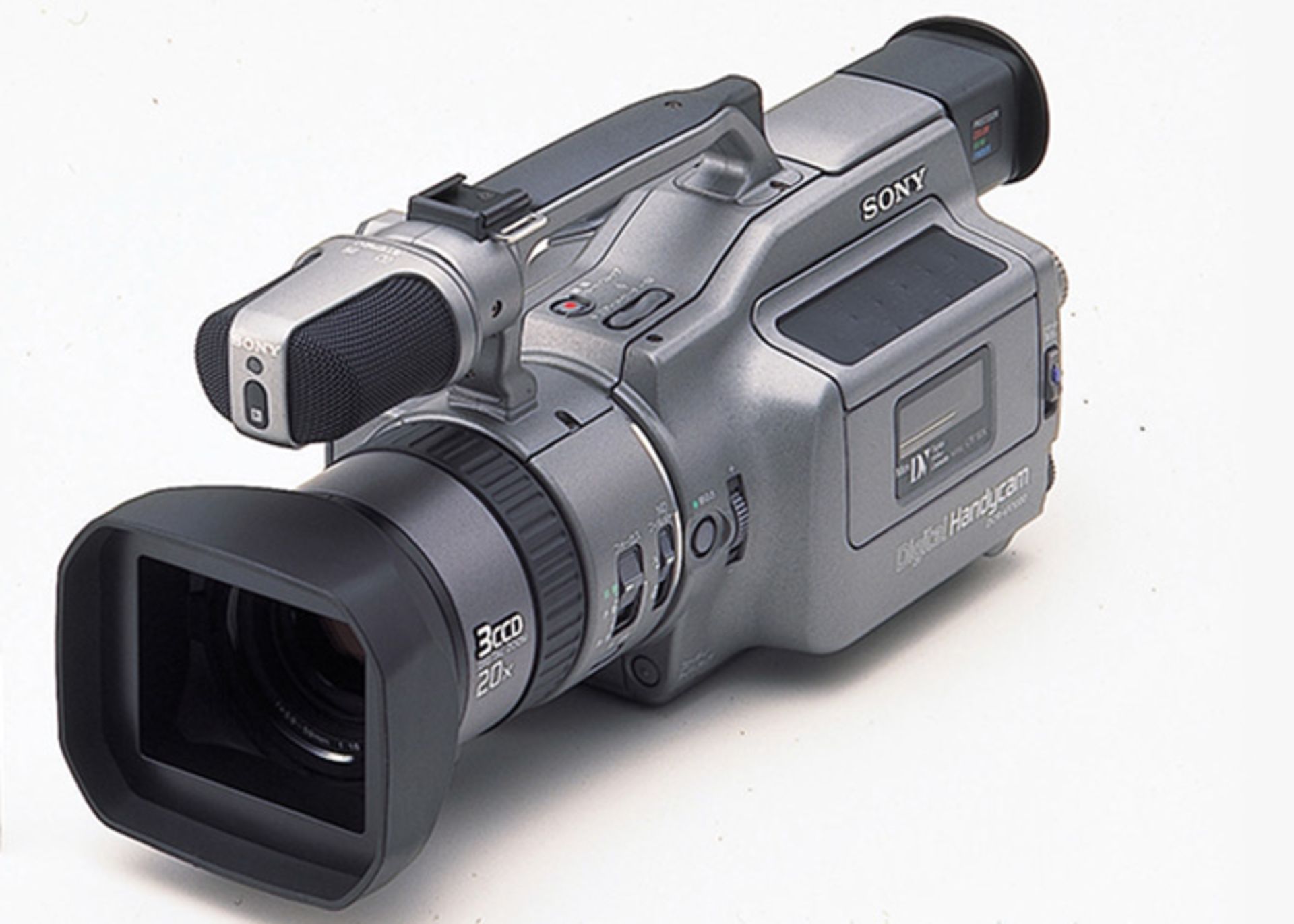
The first digital camera was launched by Sony in 1995. This device was very well built and recorded high-quality videos.
Sony Mobile
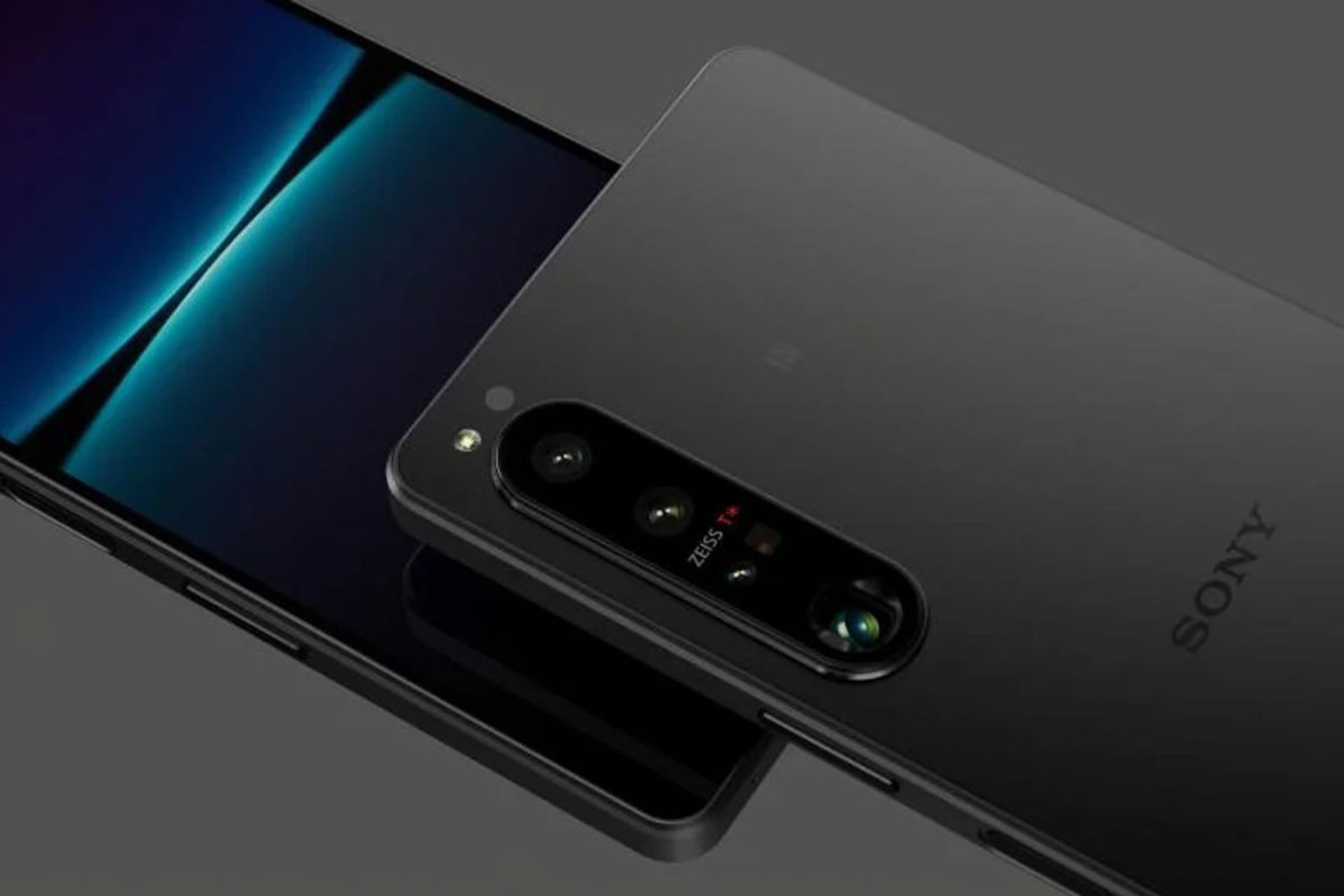
Sony Mobile Company started working in 2001 in cooperation with Ericsson. The company’s products were first marketed under the name of Sony Ericsson until Sony bought Ericsson’s shares in 2012. Since then, the phones of this company have entered the market under the name of Sony.
In 2012, Sony was able to win the title of the fourth mobile phone manufacturer. Xperia series mobile phones are the current flagships of this company. The Xperia brand doesn’t sell much at the moment, but Sony continues to produce products.
Vaio laptop
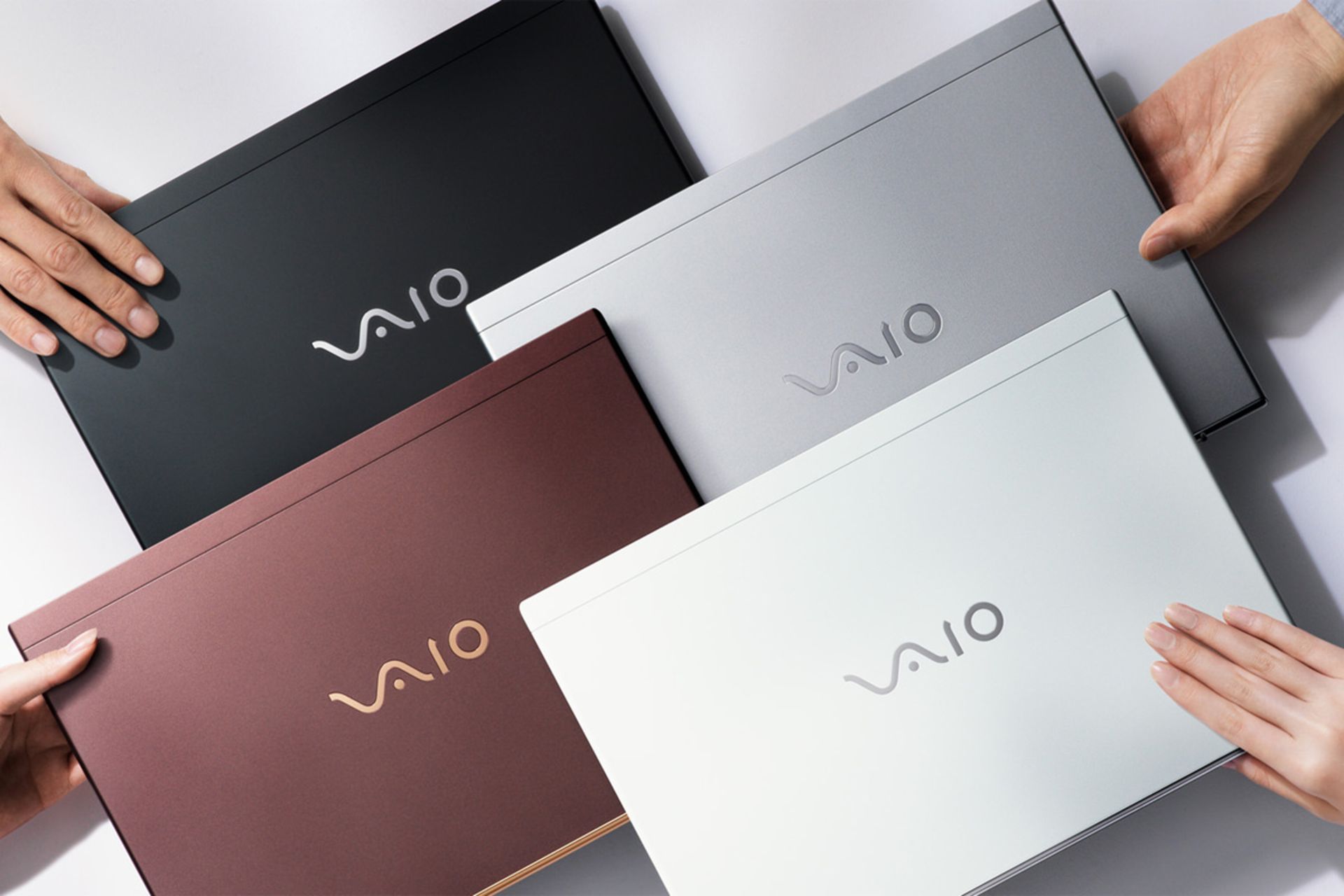
The first generation of Vaio laptops was launched in 1997. These laptops had a slim body and introduced a new concept of personal computers to the world.
Personal life of Masaru Ibuka

Masaru Ibuka was born on April 11, 1908 in Nikko, Japan. He graduated from the university in 1933 and worked in a film production company. Ibuka joined the Navy during World War II and was a member of the investigative committee; But after some time in 1945, he left the war to start his own radio repair workshop in Tokyo.
At that time, people followed the news of the world through the radio. As a result, starting a radio-related business was a good idea for a company. Ibuka and Akio founded Sony in 1946. Ibuka used transistors to make his company’s products. Therefore, Sony was introduced to the world as one of the first companies to use this technology for non-combat purposes.
Ibuka was a member of the Navy during World War II
In 1976, Ibuka was awarded an honorary doctorate from the University of Tokyo. He received two other honorary doctorate degrees in 1979 and 1994 from Tokyo and American universities.
Ibuka published a book titled “Kindergarten is Too Late” in 1971. In this book, he claimed that the most important time for human learning is from birth to three years old. As a result, he has suggested ways to teach skills to children at this time.
Ibuka was the leader of Sony until 1976 and then he retired; But even after that, he had a close relationship with company managers and guided them. He died in 1997 at the age of 89 due to heart failure.
Personal life of Akio Morita
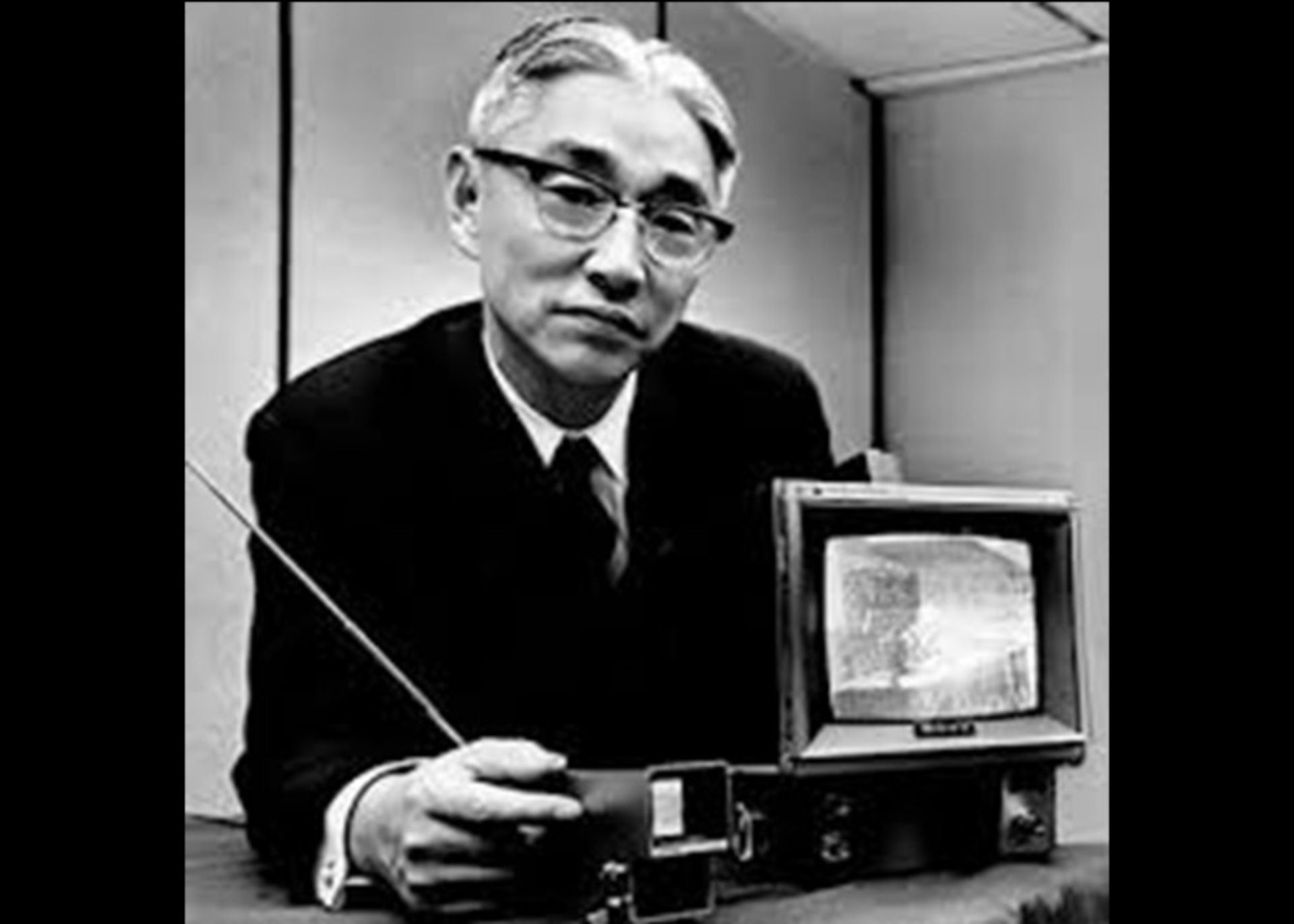
Akio Morita was born on January 26, 1921 in Japan. He was the eldest of his four siblings. As a result, his father trained him to manage the family business.
Akio was very interested in mathematics and physics and graduated from university with a degree in physics. During World War II, he became a member of the Japanese Army’s Research Committee, and while serving, met his future business partner, Masaru Ibuka.
Morita was a huge fan of all Sony products and worked hard to promote them. For example, the size of their first production radios was slightly larger than the standard shirt pocket size. Because they wanted to market their products as pocket radios, Morita made shirts for their employees with larger pockets to show customers that these radios were pocket radios.
Sony established its first branch in America in 1960. Sony was the first Japanese company to enter the US stock market. In 1994, Morita suffered a stroke while playing tennis and resigned from the chairmanship of Sony. He finally died of pneumonia in 1999 at the age of 78.
Sony failures
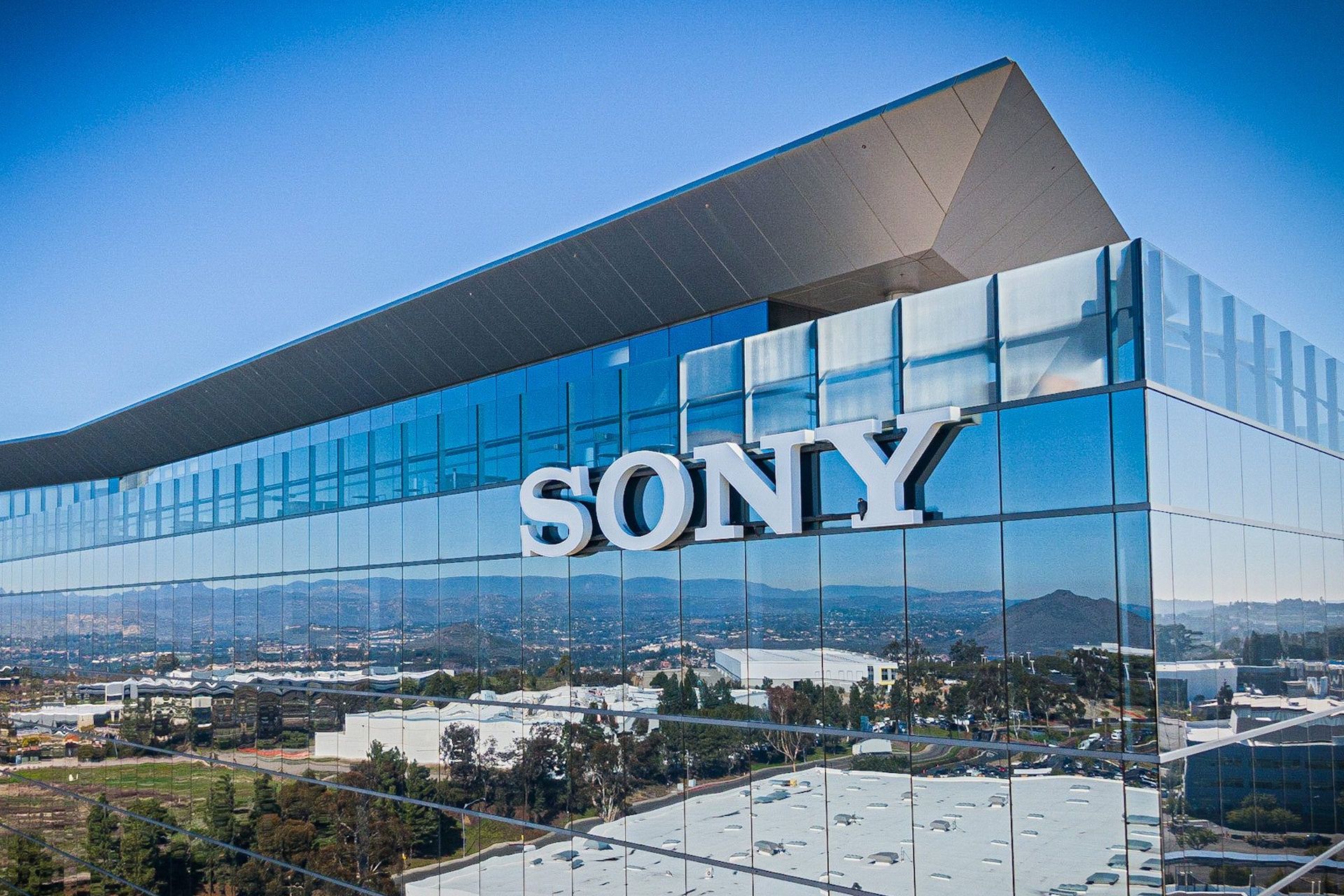
Since its establishment in 1964, Sony has produced successful and innovative products. Many of these products were entering the market for the first time, and as a result, they introduced a new concept of technology to the world; But no success story is without failures.
Sony Aibo

Sony robots were launched in 1999. These robots were in the form of cute dogs and had the power to learn. These robots could show emotions such as happiness, sadness, anger, surprise, fear and disinterest.
Sony robots were sold at a price of $2,500 and were very popular among their owners. But its high price prevented it from increasing its popularity and eventually, Sony stopped production.
Vaio music device
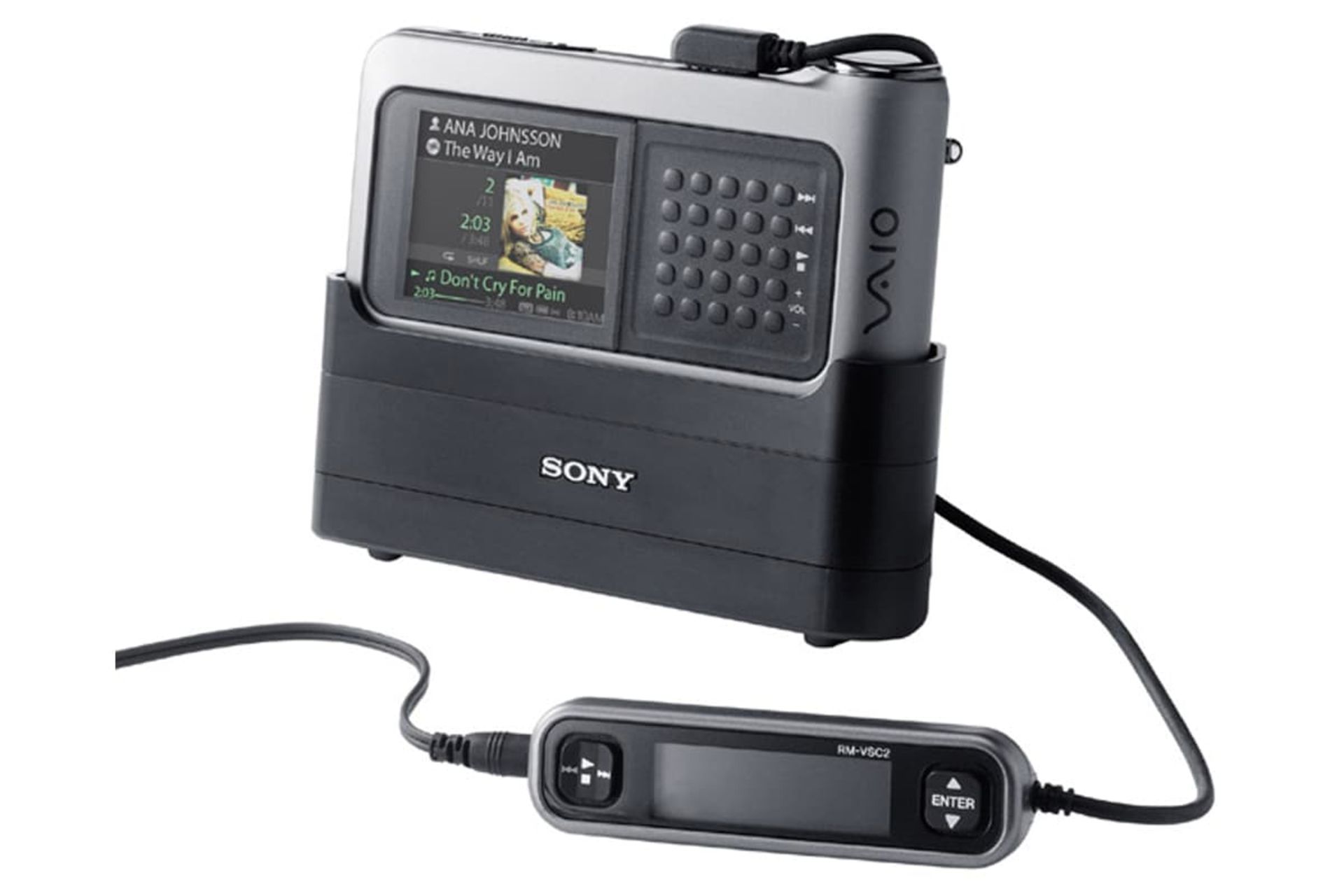
In 1979, Sony introduced a new concept of portability to the market by presenting its Walkman. The company had been Apple’s fierce competitor in digital music for two years, but its first product did not perform well.
The biggest mistake of the company was the dependence of files on the ATRACT format. Files with this format could only be used in Sony minidiscs. The ability to share files was the first word in digital music in 2000, and all files were released in MP3 format. As a result, this issue became a big challenge for Sony.
Sony e-Villa
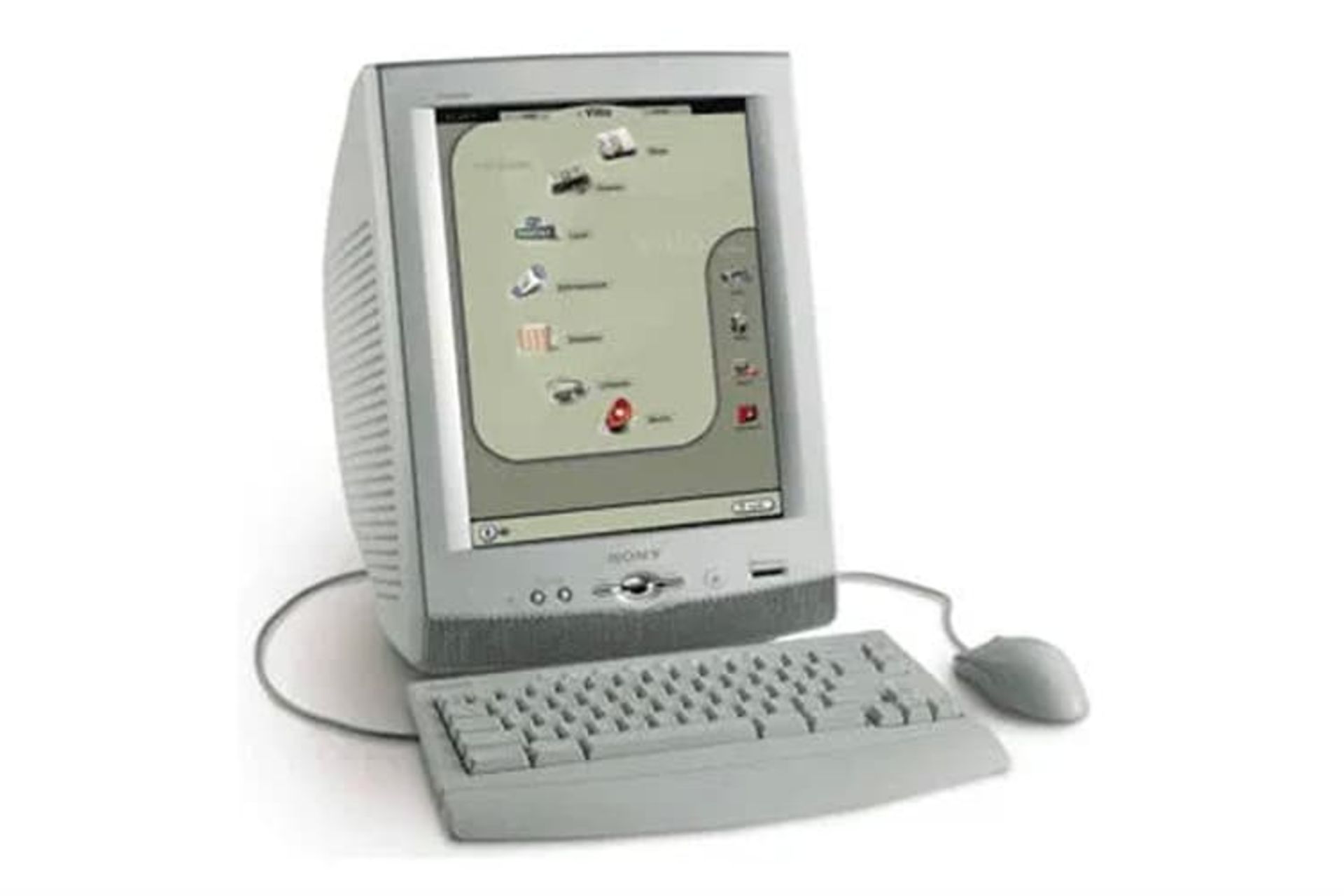
In 2001, many companies were offering Internet home appliances, including dedicated terminals for accessing the Internet and web browsers. Sony e-Villa was also a product that was launched with the same purpose.
The e-villa had a 15-inch monitor and a 56 kbps dial-up modem. e-Villa was designed to have access to email services and websites. At that time, there was a lot of competition between these devices and people preferred to use devices with Windows XP. As a result, Sony stopped the production of these products after three months.
Sony Airboard
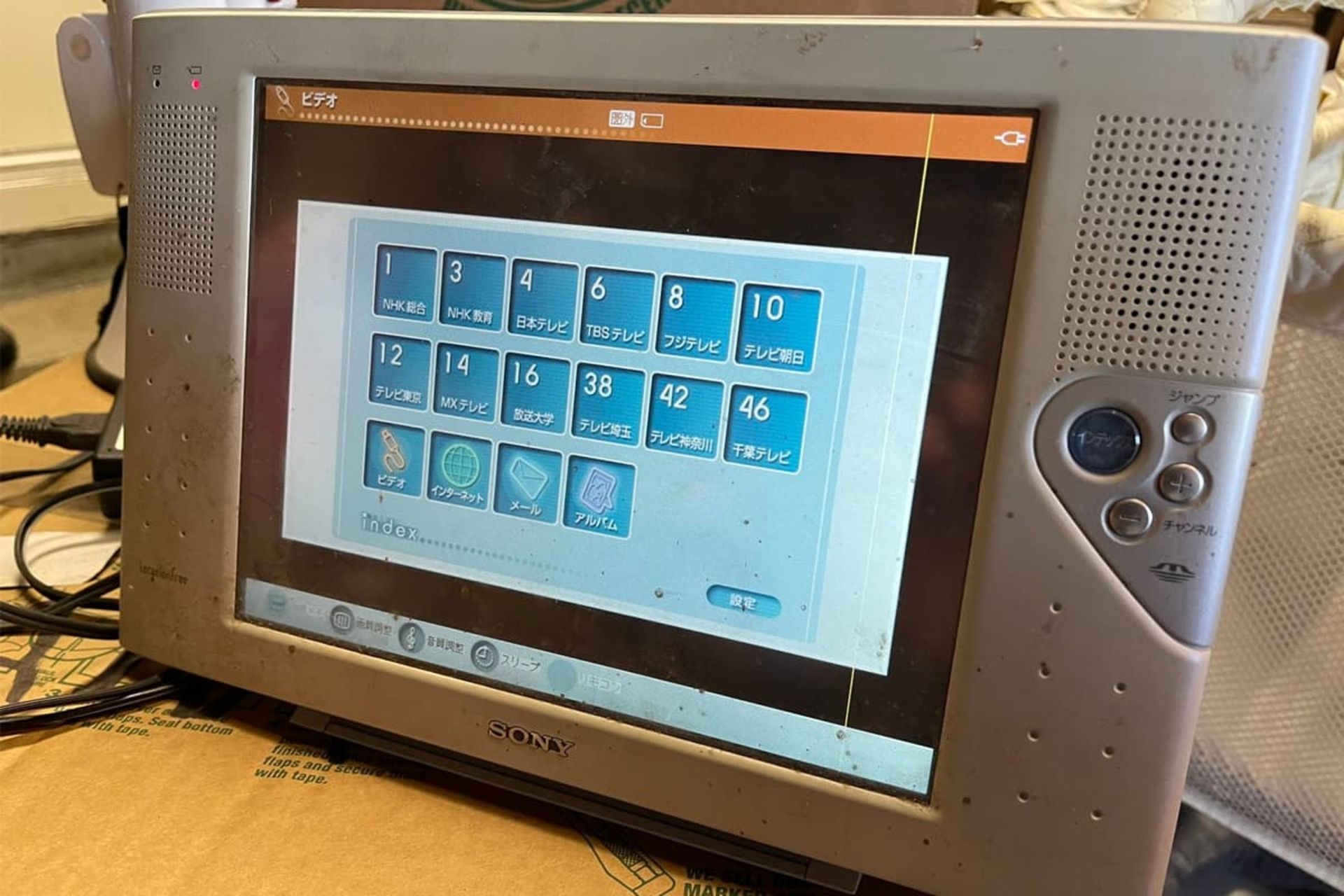
10 years before people became interested in watching videos on tablets, Sony launched a device called Airboard. The tablets of this family were 10 inches and had the possibility to connect to Wi-Fi and broadcast TV channels.
Using the picture-in-picture feature, users could search the Internet and watch TV. This device never caught on because people thought it was just a portable and expensive TV. Therefore, its production was stopped before entering the American market.
Sony PSX
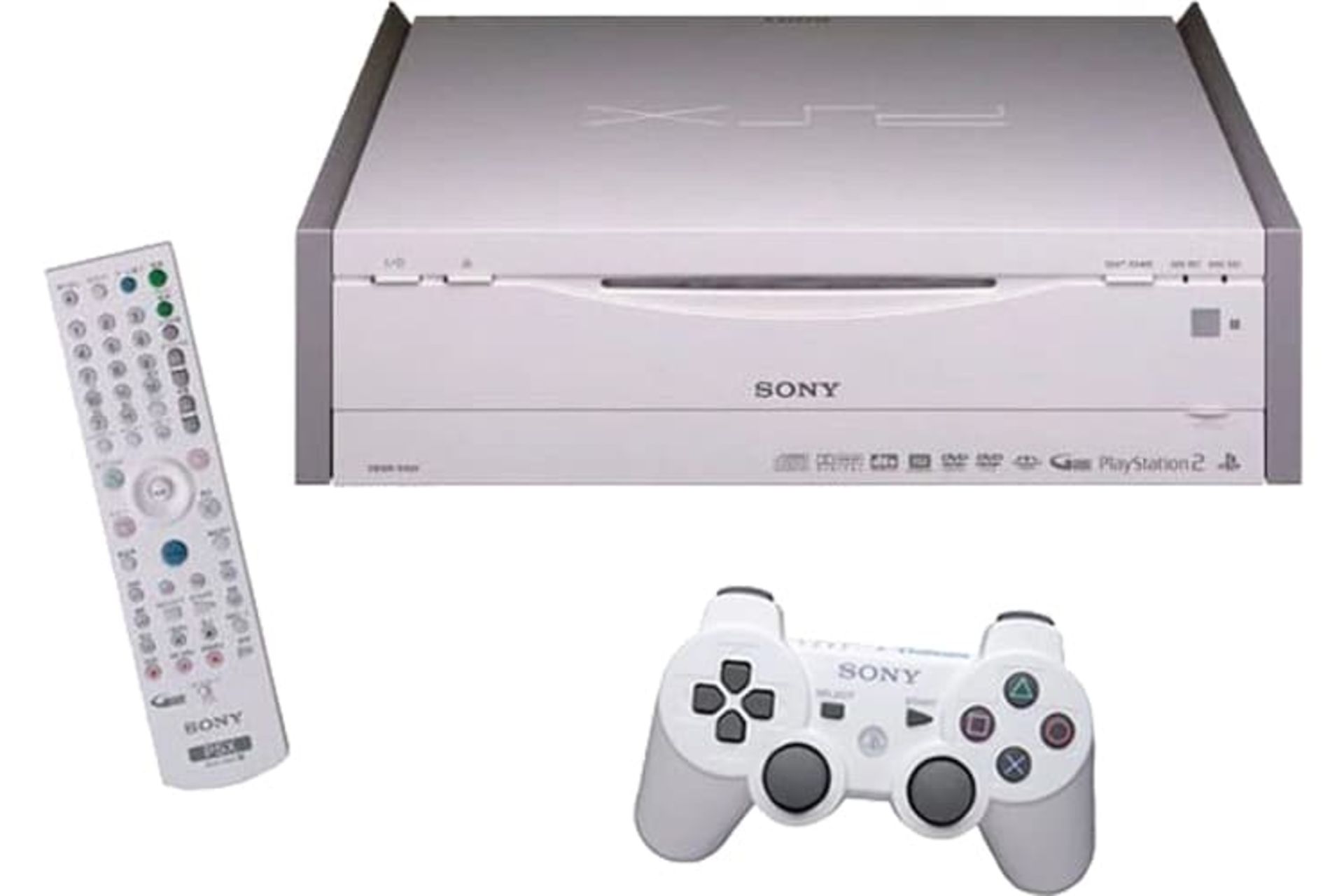
In 2003, Sony combined its two products, the PlayStation 2 and the video recorder, and marketed it as a single product. Using this product, customers could record the TV show on the storage memory or DVD at the same time as the game experience.
But the PSX, which was released only in Japan, was much larger and heavier than the PlayStation. Although this product did not have a high price, it could never attract many customers.
The current state of the Sony brand

Sony is one of the largest Japanese companies by revenue. The company reached the peak of profitability in the 1990s and 2000s due to the launch of its PlayStations, but faced financial problems in the late 2000s.
Read more: Samsung brand story; Full-view mirror of Korea’s commercial history
The global financial crisis, increased competition with PlayStation, and the earthquake in Japan in 2011 went hand in hand with Sony experiencing major failures for three years.
Due to the negative effects caused by natural disasters and exchange rates, the Times magazine called Sony a lack of flexibility and inability to measure the economy, but Sony was able to overcome all the crises in all these years by using innovation and became one of the top companies in the world. become in the television industry.
Sony’s current slogan is Be Moved, and the company aims to emotionally excite its customers with every product it offers.
Sony was able to pocket an operating profit of 1.21 trillion yen (about 8.9 billion dollars) in fiscal year 2022, which is a new record. Sony’s revenue in the final quarter of last year grew by 35 percent to about 3.06 trillion yen ($22.5 billion).


Adjective: The greatest; the best.
Pronoun: The greater part of a group, especially a group of people.
Noun: The greatest amount.
Noun: The greater part.
Noun: A record-setting amount.
How did the people of the past imagine the future?
How can you explain to people in the 1900s that a robot can sweep floors and carpets without any intervention by drawing a map of your house without sounding crazy?
To people of the last century, our technology today seems like magic; But that doesn’t mean they didn’t fantasize about what the future would be like. Many inventors and artists have depicted their own predictions of future technology. Let’s look at these paintings and then comment on their scope.
 Bird postman – 1892
Bird postman – 1892
The potential of human flight was one of the concerns of futurists. It is true that aviation has revolutionized our world, but the type of flying equipment and “flying cars” that captured the imagination a century ago will remain for the future.
One of the important innovations that the minds of the ancients often did not imagine is the Internet and modern wireless communications. In today’s world, the flying postman pictured here would probably be out of a job thanks to plain old email.
 Electric floor washer (electric scrubber) – 1899 | The vacuum cleaner was invented just two years after this image was made.
Electric floor washer (electric scrubber) – 1899 | The vacuum cleaner was invented just two years after this image was made.
The idea of a robot vacuum cleaner, now a reality in millions of homes, was apparently beyond imagination in the late 19th century.
 Machine learning-1901
Machine learning-1901
According to this prediction, teaching was supposed to become a very easy job by the year 2000. The principal simply feeds the history books into the machine, while an assistant (or perhaps a student being punished?) turns the handle and somehow wires the contents of the books to the headsets the students are wearing, and from there into their minds. sends Do you understand the necessity of the presence of the school principal in this process?
 Phone with photo – 1918
Phone with photo – 1918
The arrival of video-calling technology was predicted more than a century ago. The Electrical Experimenter magazine wrote in 1918: “Many inventors have attempted to invent a device or machine by which one person can see another while talking on the telephone.” According to the author of the magazine, such a device, which should naturally be called a “telephot”, will be invented sooner or later, because “everyone would like to have such a device.”
 Video call – 1942
Video call – 1942
Another article in the magazine Practical Electrics in 1942 predicted a similar device with moving pictures so interesting it is admirable.
 wheel of destruction
wheel of destruction
During World War I, specialized technology magazines were full of ideas that were hoped to bring an end to the long conflict. One of these inventions was the gyro-electric destroyer. “This 45-foot monster is steered by a large gyroscope wheel,” Electrical Experimenter magazine reported. “The destroyer travels at a speed of 40 to 60 miles per hour and because of its large diameter it easily rolls over trenches and other obstacles.”

The vision envisions a robot dog that readers can build for themselves; A wheeled device that operates with batteries and follows its owner’s metal cane through a magnet. It may have a cute face but don’t expect this dog to roll over, play, or react if something bad happens to you.
The idea of artificial pets doesn’t seem so strange nowadays. This is a concept that exists mostly in the field of cyberspace, exemplified by digital home assistants and artificial intelligence-based video game characters.
 Climate control – 1954
Climate control – 1954
The dramatic image above shows how future humans will be able to control the weather. This article describes an airplane that is dispatched to disperse a cloud that threatens to form a tornado. “In the age of the hydrogen bomb and supersonic flight, it’s possible that science will find ways not only to destroy tornadoes and hurricanes but also to influence weather conditions in ways that will boggle the imagination,” the magazine reports.
Read more: The future of generative artificial intelligence from its own language
 Food planning by computer – 1967
Food planning by computer – 1967
In 1967, Philco-Ford, a maker of electrical goods, produced a short film called 1999AD, showing how its future products might transform ordinary homes. The family in the film owns a space-age car, a large wall-filling television, and a large home computer that helps the family (specifically the mother) plan their meals. In the film, we see the father of the family using the computer to check the invoice for the clothes he bought online.


Do animals have an understanding of the concept of death?


What is Kali Linux? Everything you need to know about this popular but mysterious distribution


Sony Brand Story; From the production of rice cookers to becoming one of the most famous companies in the world


How did the people of the past imagine the future?


Mammoth and dodo return to nature


Canopus; What do we know about the second brightest star in the sky?


How to use iMessage on Android?


Can humans endure the psychological torment of living on Mars?


Xiaomi Glorimi M2 Max watch review; Alternative economic option for iPhone owners


Why do we humans sleep?
Popular
-



 Technology1 year ago
Technology1 year agoWho has checked our Whatsapp profile viewed my Whatsapp August 2023
-



 Technology1 year ago
Technology1 year agoSecond WhatsApp , how to install and download dual WhatsApp August 2023
-



 Technology1 year ago
Technology1 year agoHow to use ChatGPT on Android and iOS
-



 AI2 years ago
AI2 years agoUber replaces human drivers with robots
-



 Technology1 year ago
Technology1 year agoThe best Android tablets 2023, buying guide
-



 Technology1 year ago
Technology1 year agoThe best photography cameras 2023, buying guide and price
-



 Humans2 years ago
Humans2 years agoCell Rover analyzes the inside of cells without destroying them
-



 Technology1 year ago
Technology1 year agoHow to prevent automatic download of applications on Samsung phones
